The Best of JCPenny Down Comforters
Down comforters are must-have items in every winter home. Due to their loft, soft outer fabric, and fluffy fill, down comforters are one of the items that you dream about when you’re out in the cold, and simply can’t wait to get home, under the sheets. But choosing the best comforter can be quite a pain, especially if you don’t know what to look for. No worries, we’re here to help.
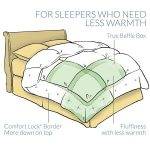
1. Pacific Coast™ Light-Warmth Down Comforter – Editor's Choice
- Available Sizes: Twin, Full/Queen
- Dimensions (Queen): 88 x 90 inches
- Fill Weight (Queen): 24 oz
- Thread Count: 300
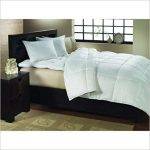
2. St. James Home Down Comforter
- Available Sizes: Full/Queen, King
- Dimensions (Queen): 90 x 90 inches
- Fill Weight (Queen): N/A
- Thread Count: 500
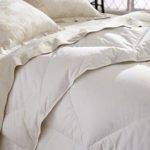
3. Restful Nights® All-Natural Down Comforter
- Available Sizes: Full/Queen, King
- Dimensions (Queen): 86 x 86 inches
- Fill Weight (Queen): 25 oz
- Thread Count: 230
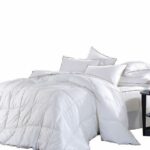
4. B. Smith Junoseque Down Comforter
- Available Sizes: Queen, King
- Dimensions (Queen): 90 x 92 inches
- Fill Weight (Queen): 29 oz
- Thread Count: 300
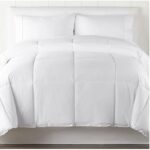
5. Liz Claiborne White Goose Down Comforter
- Available Sizes: Full/Queen, King
- Dimensions (Queen): 90 x 96 inches
- Fill Weight (Queen): 39 oz
- Thread Count: 300
Table Of Contents
- The Best of JCPenny Down Comforters
- 1. Pacific Coast™ Light-Warmth Down Comforter
- 2. St. James Home Down Comforter
- 3. Restful Nights® All-Natural Down Comforter
- 4. B. Smith Junoseque Down Comforter
- 5. Liz Claiborne White Goose Down Comforter
- <span style=”font-weight: 400;”>Steps to Choosing a Good Down Comforter</span>
- <span style=”font-weight: 400;”>Step 1: The Budget</span>
- <span style=”font-weight: 400;”>Step 2: The Bed</span>
- <span style=”font-weight: 400;”>Step 3: The Season</span>
- <span style=”font-weight: 400;”>Step 4: The Construction</span>
- <span style=”font-weight: 400;”>Step 5: The Cover</span>
- <span style=”font-weight: 400;”>Bottom Line</span>
The Best of JCPenny Down Comforters
1. Pacific Coast™ Light-Warmth Down Comforter – Editor's Choice
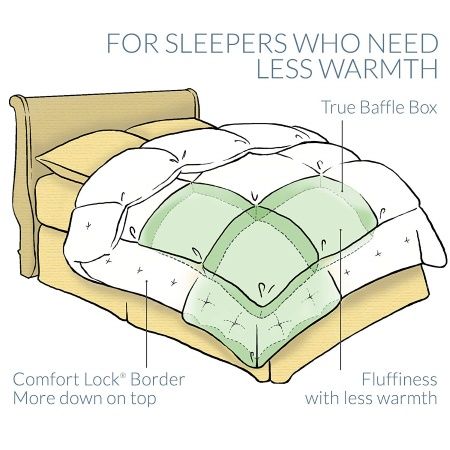
Highlights
- Available Sizes: Twin, Full/Queen
- Dimensions (Queen): 88 x 90 inches
- Fill Weight (Queen): 24 oz
- Thread Count: 300
Pros
- Hypoallergenic fill.
- Features the Comfort Lock® three-sided border.
- Cotton outer shell.
- 300 thread count.
- Baffle box construction.
- Good for all seasons.
Cons
- Noisy.
- King size out of stock.
Label: best for year-round use
Pacific Coast has been known for quite a long time for making some of the best down comforters on the market. They have more than 12- years of research and production, which has made them one of the best bedding brands in America. This light-warmth comforter is just one of the many great products they sell.
The comforter is made 100 percent natural down and features a cotton outer shell that’s soft and breathable. The thread count is 300, which is pretty much the standard for a good weave. It features the patented Comfort Lock® three-sided border, which is meant to prevent down from shifting to the edges of the comforter more than needed.
Thanks to the baffle box construction, the comforter has down distributed evenly throughout its entire surface. Overall, this is precisely the type of comforter that makes you want to stay in bed.
Who Should Purchase This?
Pacific Coast is the type of brand that you can’t go wrong with. This comforter provides an excellent combination of a product that’s light enough to be used in the summer and one which has good insulation properties for winter use as well.
2. St. James Home Down Comforter
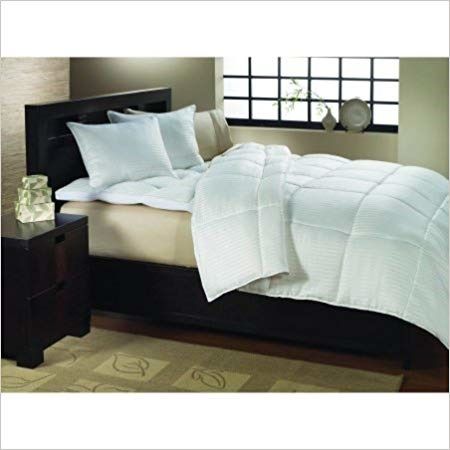
Highlights
- Available Sizes: Full/Queen, King
- Dimensions (Queen): 90 x 90 inches
- Fill Weight (Queen): N/A
- Thread Count: 500
Pros
- Made with natural down.
- Thread count of 500.
- 600 fill power.
- Features baffle box construction.
- Quality outer cotton shell.
Cons
- Pricey.
- Might be too hot for summer use.
Label: highest thread count
If it’s a higher thread count you’re interested in, here is one of the best choices available at JCPenney. The St. James comforter is made with goose down, and a comfortable outer shell made entirely out of cotton. The 500-thread count is smooth and durable, backed up by a dobby stripe weave that makes it even softer and resistant to wear and tear.
It features a baffle box construction, which is pretty much the standard option for companies that are looking to create a comforter that is lightweight and suitable for all seasons. Even though it is advertised as being perfect for year-round use, the fill power of 600 is pretty high, indicating powerful insulation that could retain heat and cause sleepers to feel uncomfortable on hot summer nights.
Who Should Purchase This?
If you’re willing to go the extra mile and spend money on what is considered to be a luxury down comforter, this St. James product is up that alley. Made from natural goose down and with an outer cotton shell with a thread count of 500, which is a premium item.
3. Restful Nights® All-Natural Down Comforter
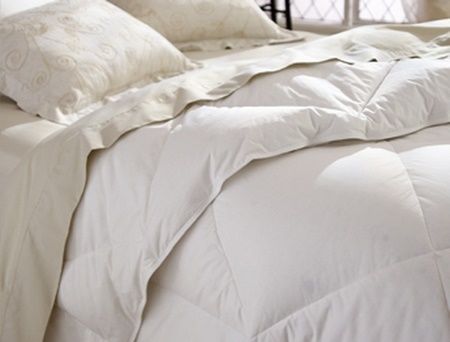
Highlights
- Available Sizes: Full/Queen, King
- Dimensions (Queen): 86 x 86 inches
- Fill Weight (Queen): 25 oz
- Thread Count: 230
Pros
- Hypoallergenic materials.
- Cotton cover.
- 230 thread count.
- Natural down fill.
- Convenient price.
Cons
- Queen size is smaller than usual.
Label: bargain buy
Every time we come across a product at a price that’s too good to be true, we always try to look for hidden flaws that might justify the price. But the Restful Nights comforter doesn’t have anything to hide. It’s an all-natural down comforter covered in a cotton shell, with a thread count of 230.
Every fabric and fill used to make this comforter is hypoallergenic, making it perfect for people who have skin sensitivity or suffer from any form of respiratory disease.
Who Should Purchase This?
We’ve picked this particular comforter because of its wonderful balance of affordability and specifications. The features of the Restful Night comforter are beyond expectations, considering that you can buy this item on sale for less than $150.
4. B. Smith Junoseque Down Comforter
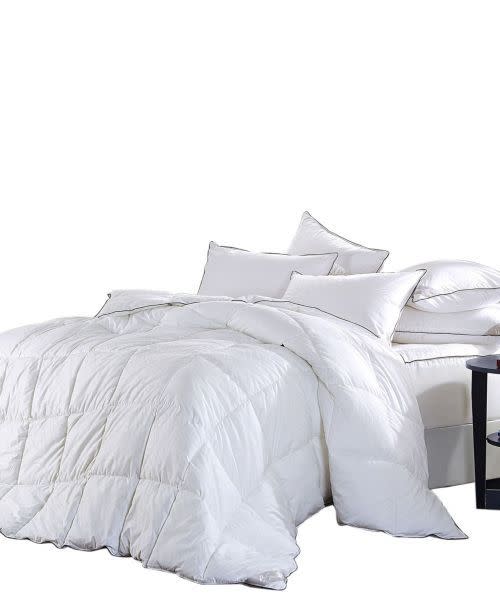
Highlights
- Available Sizes: Queen, King
- Dimensions (Queen): 90 x 92 inches
- Fill Weight (Queen): 29 oz
- Thread Count: 300
Pros
- Duck down and feather fill.
- 600 fill power.
- 300 thread count.
- Quality cotton outer shell.
- 29 oz fill weight.
Cons
- Too warm for summer use.
- Pricey.
Label: best feather/down combo fill
Here is another masterpiece in terms of high-quality down comforters. The B. Smith features a hypoallergenic fill, that combines duck down and feathers in a 75-25 combo. With its midweight warm factor, this isn’t exactly the ideal choice for warm seasons but performs extremely well when tested in lower temperatures.
The 600-fill power is the perfect proof that the insulation properties of this comforter are outstanding. The 29-ounce fill weight is here to back up that statement. The outer shell, much like every other quality down comforter, is made with cotton, with a thread count of 300.
Who Should Purchase This?
Everything about this comforter is pure luxury, as well as the price. The B. Smith Junoseque down comforter is definitely a product for people who are looking to step up their sleeping game and believe that a fill combining feathers and down is the most comfortable choice of all.
5. Liz Claiborne White Goose Down Comforter
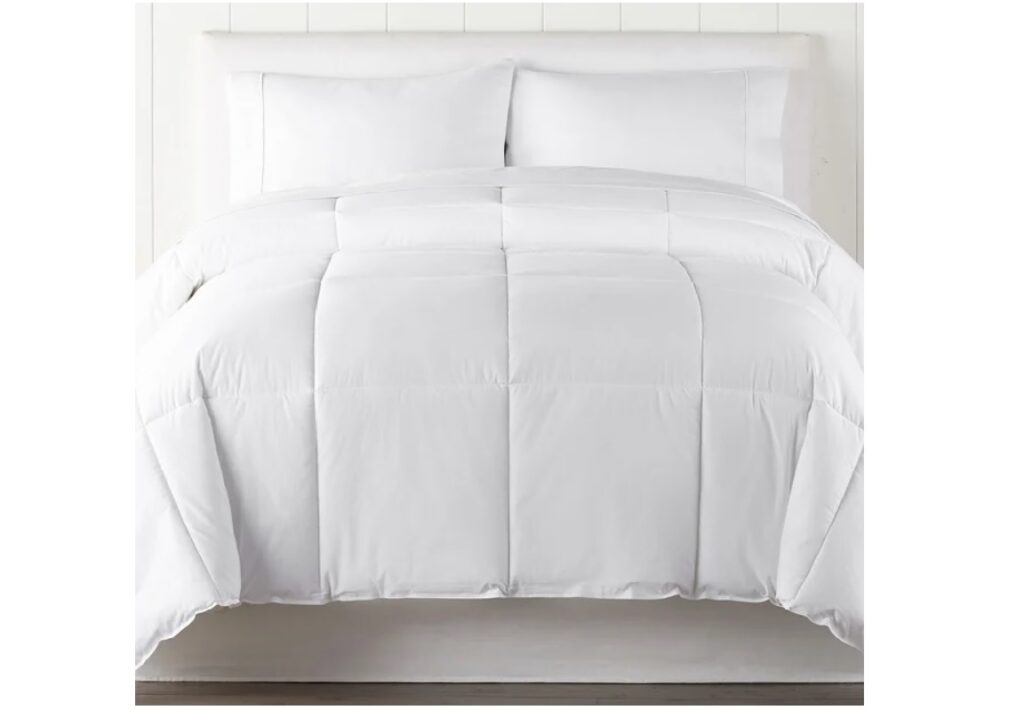
Highlights
- Available Sizes: Full/Queen, King
- Dimensions (Queen): 90 x 96 inches
- Fill Weight (Queen): 39 oz
- Thread Count: 300
Pros
- Natural goose down fill.
- Baffle box construction.
- Pure cotton outer shell.
- Machine washable.
- High fill weight.
- Corner loops
Cons
- Can be too heavy for some.
Label: best heavyweight comforter
THIS! This is the comforter you want if you get nocturnal chills every single winter. This Liz Claiborne beauty is an ace at keeping away cold and keeping your body nice and toasty underneath the covers. It has a fill power of 650, backed up by a 39-ounce fill weight. These two combines are pretty much the best combo for a comforter below $500.
The outer shell is made of cotton because we wouldn’t have it any other way. The thread count is 300, which is more than enough of a quality indicator. Inside the comforter lies a loft made from white goose down, which is considered to be superior to duck down.
It’s made with a baffle box construction, and it features corner loops, to make it easier to tuck the comforter into the cover. Buyers beware! Some of you might consider this comforter a bit heavy, but if you’ve ever used an old-fashioned comforter and survived, then you should have no trouble getting used to this one as well.
Who Should Purchase This?
If you’re anything like me, you get cold feet every winter night. And since doctors never really recommend upping the temperature too much in the bedroom, a comforter like the one made by Liz Claiborne and sold by JCPenney is pretty much a dream come true. No colder, no more chills, just plain insulation power!
Steps to Choosing a Good Down Comforter

Contrary to popular belief, there isn’t a best or worst type of down comforter. Pretty much like every other product you buy, down comforters should be given careful consideration because what labels a product as being “good” is actually meeting the demands of a particular type of sleeper and a particular sleeping environment. While there is no absolute best choice, there are some steps that buyers can follow to pick a comforter they can be pleased with.
Step 1: The Budget
People are tempted to think that the best products are luxury ones. Ultimately, some people buy luxury comforters and discover that maybe this wasn’t the best choice for them. Even if most comforters have a return policy of 30 days, some people may overlook that window, and end up having a product they don’t like, and for which they paid too much.
Establishing a budget and actually sticking to it is hard, but not impossible. Chances are, you will find a decent down comforter within your given budget, so there’s no need to panic. You can find a good down comforter under $300, but you should know that there are features that will cost more.
Step 2: The Bed
As odd a this may sound, you might want to actually measure your mattress before choosing a comforter size. There have been a lot of complaints registered across different well-known bedding brands, claiming that the comforters are too small for their size of the bed, despite their right order placement.
Translation: just because you order a King-size comforter and you already know that you have a King-sized bed, that doesn’t always mean that these two will have the exact same size. If you measure the bed and always have the dimensions in front of you, you can’t go wrong when placing an order.
Step 3: The Season
A down comforter is definitely a long-term investment. Nobody wants to spend $300 every year on a new comforter, but there are situations where you might need two comforters instead of one. One of the ways to classify down comforters is by the season in which they serve.
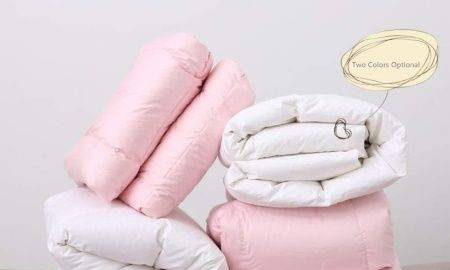
Comforters with a lot of pill power and superior insulation properties are mainly good for use in the cold seasons. Even then, some people may not need a comforter because the temperature inside the bedroom is pretty high.
But the important thing to remember here is that comforters can be for winter use, or for year-round use. Now, this “year-round” feature is pretty debatable, in our own humble opinion. For a manufacturer to state that a down comforter can be used throughout the entire year is an overzealous statement.
For this to be true, your bedroom should have the same temperatures in both winter and summer. But if your home is really hot in the summer, and gets cold in the winter, you can’t very well use the same comforter.
Step 4: The Construction
With down comforters, there are three important things that a buyer must look after before choosing a specific model: the fill power, the outer fabric, and the stitching. The fill power is a degree of the insulation properties of a comforter. The higher the fill power, the better the comforter is at retaining heat and keeping the sleeper warm.
The outer fabric is the material that’s used to make the cover of the comforter, or what keeps the fill together. This fabric can be anything from pure cotton, silk, micromesh, polyester, linen, or different fabric blends. The industry standard is cotton, because it is the materials with the best properties, and also the most comfortable one, without being too expensive to produce.
As far as the outer fabric is concerned, some people argue that the best indicator of quality is a high thread count. Despite some absurd marketing promises, buying a down comforter with an outer shell that has a thread count between 250 and 400 is more than enough.
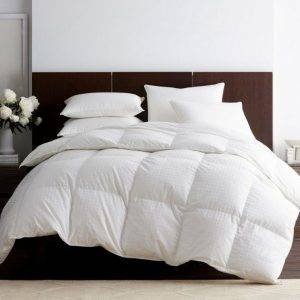
The stitching is basically the way in which the fill stays inside the comforter. It’s really important for the fill to be evenly distributed because when the fill is allowed to move freely inside the comforter, that means it will create cold spots, or empty patches as we like to call them.
Most down comforters come with either a baffle box or a sewn-through construction. The first kind is when the top and bottom side of the comforter are sewn together, to keep the down in place. A baffle box type of stitching is when the top and bottom side of the outer shell are connected through a thin patch of fabric. The result is a 3D box that holds the loft in place but also makes the comforter fluffier.
Step 5: The Cover
When you’re considering of purchasing a white down comforter (which is typically the only color choice for good comforters), then you should also add in the price for a duvet cover, unless you already have one lying around the house.
Not only does the duvet cover keep the down comforter’s outer fabric cleaner for a longer time, but it also keeps it safe from natural wear and tear. Even more, since natural shades are the most common down comforter outer fabric choices, some people might find that the color doesn’t really suit their bedroom decor.
Comforter covers are pretty much available in all colors and patterns, but a word of warning: try to buy a duvet cover that is not colored with questionable dyes. Cheap dyes will rub against the white comforter and ruin it. Try to look for quality materials and don’t compromise when it comes to something that you want to enjoy in the long run.
Bottom Line
JCPenney is a great online retailer which provides buyers with a really good deal on down comforters made by some of the industry’s most heavy names. While it’s easy to find a comforter you like on their online store, it’s mostly a matter of first understanding what it is that you require from a comforter.
As we’ve mentioned in the first section of this article, it’s really important to determine what are the main characteristics that you would benefit from. If you find that your bedroom is too cold during the winter, you want a comforter with a lot of fill power, which automatically has better insulation capabilities.
If you want to invest in a product good for year-round use, you want a light to medium warmth comforter. If you have sensitive skin, you might want to consider an organic comforter or at least one with a pure cotton outer shell. If you toss and turn a lot during the night, you want a comforter with stitching that prevents the filling from shifting sides. Whatever it is that you need, there’s surely a comforter out there for you.
